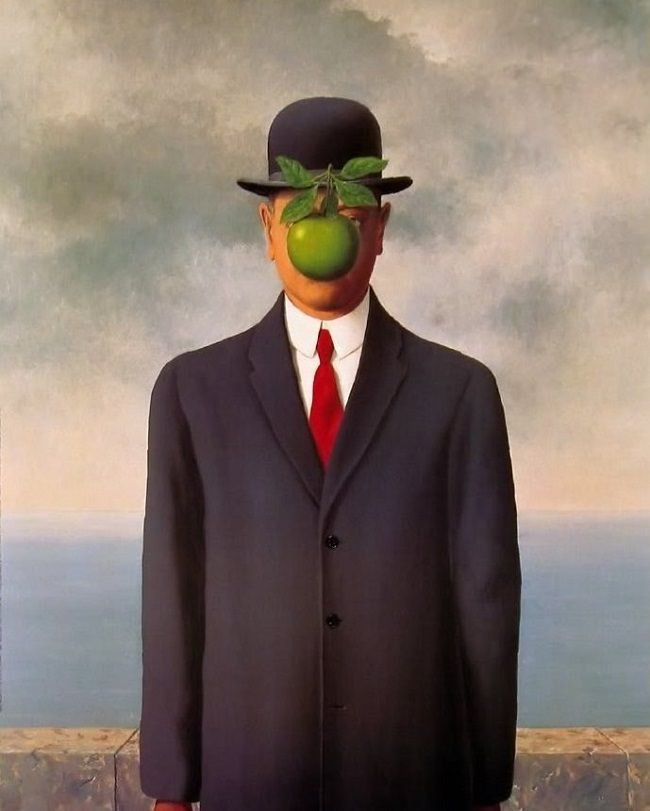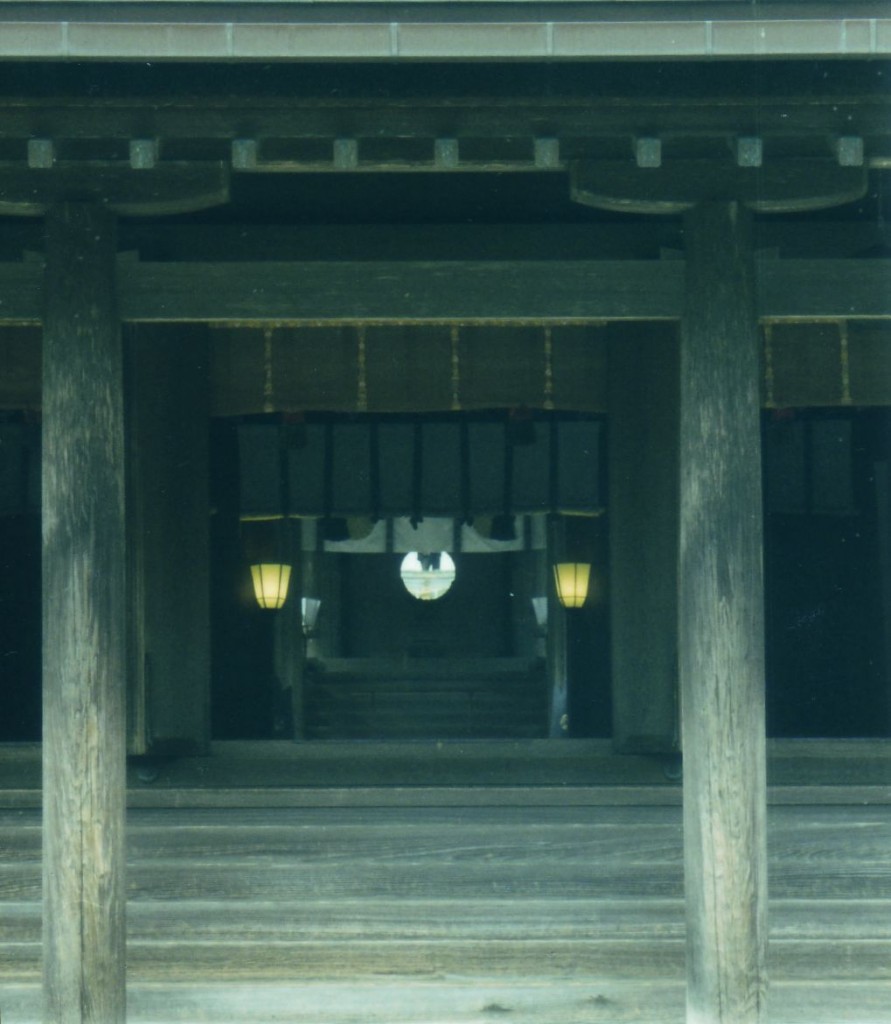
The Son of Man by Renée Magritte, 1946
Commenting on his famous picture, Magritte wrote that “Everything we see hides another thing, we always want to see what is hidden by what we see. There is an interest in that which is hidden and which the visible does not show us. This interest can take the form of a quite intense feeling, a sort of conflict, one might say, between the visible that is hidden and the visible that is present.”
It’s an illuminating remark, and one that helps in explaining the appeal of Shinto. Traditionally there were no images of kami, because they are unseen. Mystery is preserved by keeping the ‘spirit-body’ (goshintai) hidden. The holy of holies is a mirror – an emptiness that reflects whatever is before it.
In A Handbook for Travellers in Japan, Basil Hall Chamberlain wrote of a disappointed tourist who said of Ise, ‘There is nothing to see, and they won’t let you see it.’ But far from being disappointed, the tourist should have shown appreciation of the subtlety, for the nothingness gives perfect expression to the great mystery of existence. And in its immaculate style and execution, it is quintessentially Japanese.

A work of art with a similar theme to Magritte

Very interesting and beautifully expressed as always! I would argue that there is plenty to see at a Shinto shrine, though. The trees, rocks, moss, streams, waterfalls, animal life…there’s no need for any statues or pictures to represent the kami because the kami are right there!
Thank you, Megan. There’s certainly plenty to see at shrines, as I think I pointed out in my book Shinto Shrines with Joseph Cali, but it’s the unseen that in a sense matters most – as in life. Increasingly as one ages, one comes to see that though we live in a material world, it’s one’s spiritual development that is of true value.